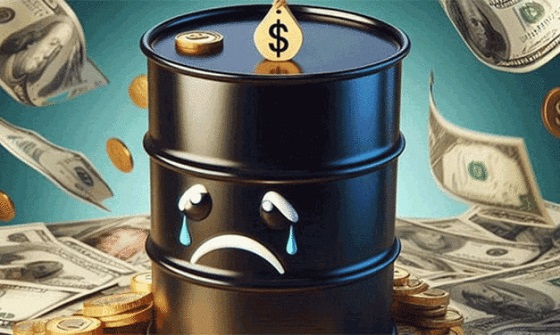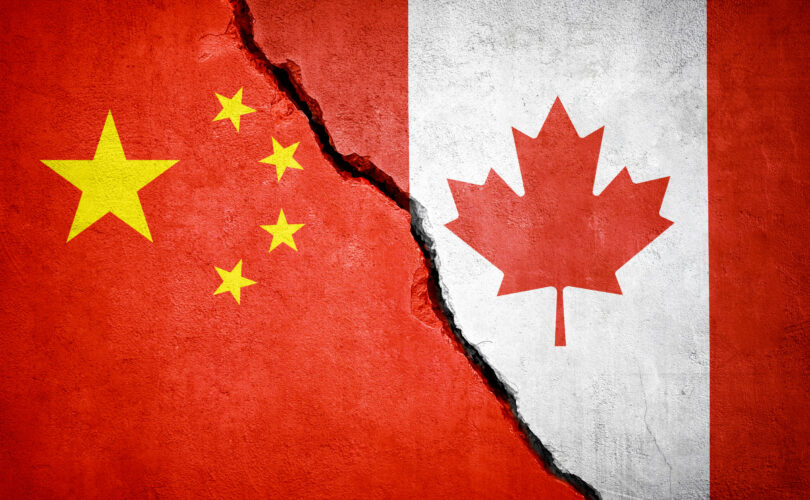Energy
Strong domestic supply chain an advantage as Canada moves ahead with new nuclear

From the MacDonald Laurier Institute
By Sasha Istvan
Canada has two major advantages. We produce uranium and we have an established supply chain.
The pledge from 22 countries, including Canada, to collectively triple nuclear capacity by 2050 drew cheers and raised eyebrows at the United Nations Climate Change Conference last fall in Dubai. Climate commitments are no stranger to bold claims. So, the question remains, can it be done?
In Canada, we are well on our way with successful and ongoing refurbishments of Ontario’s existing nuclear fleet and planning for the development of small modular reactors, or SMRs, in Ontario, New Brunswick, Saskatchewan and most recently Alberta.
The infrastructure required to generate nuclear energy is significant. You not only need engineers and technicians working at a plant, but the supply chain to support it.
Over five decades worth of nuclear generation has allowed Canada to build a world class supply chain. Thus far it has focused on servicing CANDU reactors, but now we have the potential to expand into SMRs.
I first became interested in the CANDU reactor after working as a manufacturing engineer for one of the major fuel and tooling suppliers of Ontario Power Generation and Bruce Power. I witnessed firsthand the sophistication and quality of the nuclear supply chain in Ontario, being particularly impressed by the technical expertise and skilled workers in the industry.
The CANDU reactor is the unsung hero of the Canadian energy industry: one of the world’s safest nuclear reactors, exported around the world, and producing around 60 per cent of Ontario’s electricity, as well as 40 per cent of New Brunswick’s.
Having visited machine shops across Ontario, it’s evident that Canadians should take pride that the expertise and technology required for the safe generation of nuclear energy is available here in Canada.
As Canada looks to grow its nuclear output to achieve net-zero goals, its well-established engineering and manufacturing capabilities can make it a leader in the global expansion of nuclear energy as other nations work to make their COP28 declaration a reality.
Canada has two major advantages. The first is that it is a globally significant producer of uranium. We already export uranium from our incredible reserves in northern Saskatchewan and fabricate unenriched uranium fuel for CANDU. Canadian uranium will be an important ingredient in the success and sustainability of a nuclear renaissance, especially for our allies.
The second is that we have an established and active supply chain. While new nuclear builds have slowed dramatically in the western world — a result of the fallout from Chernobyl and Fukushima, as well as competition from cheap natural gas — Bruce Power and OPG are in the midst of major refurbishments to extend their operations until 2064 and 2055, respectively.
Bruce Power has successfully completed the first unit refurbishment on schedule and within budget, with ongoing work on the second unit. OPG has accomplished refurbishments for two out of its four units at Darlington, with the latest unit completed ahead of schedule and under budget. These multibillion-dollar refurbishments have actually grown our nuclear supply chain and demonstrate that it’s firing on all cylinders.
SMRs are the next phase of nuclear technology. Their size and design make them well suited for high production and modular construction. Investing in the supply chain for SMRs now positions Canada for significant economic gains.
OPG plans to build four GE-Hitachi BWRX-300 reactors, with the first slated for service as early as 2028. This first-of-a-kind investment will help identify and overcome design challenges and develop its own supply chain. That will benefit not only their project but those that follow suit.
SaskPower is planning to proceed with the same SMR design, as well as the first pilot globally of the Westinghouse eVinci microreactor; New Brunswick is moving ahead with the ARC-100, both for its existing nuclear site at Point Lepreau as well as in the Port of Belledune; and OPG and Capital Power recently announced a partnership to explore a nuclear reactor in Alberta, including the potential for the BWRX-300.
While the bulk of the nuclear supply chain is currently located in Ontario, other provinces have already been investing in the development of local capacity.
All this activity sets Canada up to leverage first-mover advantage and become a significant global provider of BWRX-300 components. Canada will not only see the economic benefits during initial construction but also through sustained demand for replacement parts in the future.
Nuclear energy has already made a significant contribution to the Canadian economy. In 2019, a study commissioned by the Canadian Nuclear Association and the Organization of Canadian Nuclear Industries showed that the nuclear industry accounted for $17 billion of Canada’s annual GDP annually and has created over 76,000 jobs.
Notably, 89 per cent of these positions were classified as high-skilled, and over 40 per cent of the workforce was under 40. This study, conducted before the announcement of SMR plans, was followed by a more recent report from the Conference Board of Canada on the economic impact of OPG’s SMR initiatives. The study found that the construction of just four SMRs at OPG could boost the Canadian GDP by $15.3 billion (2019 dollars) over 65 years and sustain approximately 2,000 jobs annually during that period.
Public perception of nuclear is improving. In 2023, the percentage of Canadians wanting to see further development of nuclear power generation in Canada grew to 57 per cent compared with 51 per cent in 2021.
As well, the Business Council of Canada has voiced its support for nuclear expansion, emphasizing Canada’s strategic advantages: political and public backing across the spectrum, coupled with a rich history of nuclear expertise.
Nuclear energy is dispatchable, sustainable and a proven technology. As nations move to achieve their climate goals, it has one other major benefit: a supply chain that is wholly western and in Canada’s case almost totally domestic.
While the critical minerals and manufactured goods required for batteries, wind and solar energy rely heavily on China and other politically unstable or authoritarian countries, nuclear provides energy independence. Canada is well positioned to help our allies improve their energy security with our strong, competitive nuclear supply chain.
Sasha Istvan is an engineer based in Calgary, with experience in both the nuclear supply chain and the oil and gas sector.
Energy
75 per cent of Canadians support the construction of new pipelines to the East Coast and British Columbia

-
71 per cent of Canadians find the approval process too long.
-
67 per cent of Quebecers support the Marinvest Energy natural gas project.
“While there has always been a clear majority of Canadians supporting the development of new pipelines, it seems that the trade dispute has helped firm up this support,” says Gabriel Giguère, senior policy analyst at the MEI. “From coast to coast, Canadians appreciate the importance of the energy industry to our prosperity.”
Three-quarters of Canadians support constructing new pipelines to ports in Eastern Canada or British Columbia in order to diversify our export markets for oil and gas.
This proportion is 14 percentage points higher than it was last year, with the “strongly agree” category accounting for almost all of the increase.
For its part, Marinvest Energy’s natural gas pipeline and liquefaction plant project, in Quebec’s North Shore region, is supported by 67 per cent of Quebecers polled, who see it as a way to reduce European dependence on Russian natural gas.
Moreover, 54 per cent of Quebecers now say they support the development of the province’s own oil resources. This represents a six-point increase over last year.
“This year again, we see that this preconceived notion according to which Quebecers oppose energy development is false,” says Mr. Giguère. “Quebecers’ increased support for pipeline projects should signal to politicians that there is social acceptability, whatever certain lobby groups might think.”
It is also the case that seven in ten Canadians (71 per cent) think the approval process for major projects, including environmental assessments, is too long and should be reformed. In Quebec, 63 per cent are of this opinion.
The federal Bill C-5 and Quebec Bill 5 seem to respond to these concerns by trying to accelerate the approval of certain large projects selected by governments.
In July, the MEI recommended a revision of the assessment process in order to make it swift by default instead of creating a way to bypass it as Bill C-5 and Bill 5 do.
“Canadians understand that the burdensome assessment process undermines our prosperity and the creation of good, well-paid jobs,” says Mr. Giguère. “While the recent bills to accelerate projects of national interest are a step in the right direction, it would be better simply to reform the assessment process so that it works, rather than creating a workaround.”
A sample of 1,159 Canadians aged 18 and older were surveyed between November 27 and December 2, 2025. The results are accurate to within ± 3.5 percentage points, 19 times out of 20.
Business
Geopolitics no longer drives oil prices the way it used to

This article supplied by Troy Media.
Oil markets are shrugging off war and sanctions, a sign that oversupply now matters more than disruption
Oil producers hoping geopolitics would lift prices are running into a harsh reality. Markets are brushing off wars and sanctions as traders focus instead on expectations of a deep and persistent oil glut.
That shift was evident last week. Despite several geopolitical developments that would once have pushed prices higher, including the U.S. seizure of a Venezuelan crude tanker and fresh Ukrainian strikes on Russian energy infrastructure, oil markets barely reacted, with prices ending the week lower.
Brent crude settled Friday at US$61.12 a barrel and U.S. West Texas Intermediate at US$57.44, capping a weekly drop of more than four per cent.
Instead of responding to disruption headlines, markets were reacting to a different risk. Bearish sentiment, rather than geopolitics, continued to dominate as expectations of a “2026 glut” took centre stage.
At the heart of that outlook is a growing supply overhang. The oil market is grappling with whether sanctioned Russian and Iranian cargoes should still be counted as supply. That uncertainty helps explain why prices have been slow to react to a glut that is already forming on the water, said Carol Ryan, writing for The Wall Street Journal.
The scale of that buildup is significant. There are 1.4 billion barrels of oil “on the water,” 24 per cent higher than the average for this time of year between 2016 and 2024, according to oil analytics firm Vortexa. These figures capture shipments still in transit or cargoes that have yet to find a buyer, a clear sign that supply is running ahead of immediate demand.
Official forecasts have reinforced that view. Last week, the International Energy Agency trimmed its projected 2026 surplus to 3.84 million barrels per day, down from 4.09 million barrels per day projected previously. Even so, the IEA still sees a large oversupply relative to global demand.
Demand growth offers little relief. The IEA expects growth of 830 kb/d (thousand barrels per day) in 2025 and 860 kb/d in 2026, with petrochemical feedstocks accounting for a larger share of incremental demand. That pace remains modest against the volume of supply coming to market.
OPEC, however, has offered a different assessment. In its latest report, the group pointed to a near balance, forecasting demand for OPEC+ crude averaging about 43 million barrels per day in 2026, roughly in line with what it produced in November.
Reflecting that confidence. OPEC+ kept policy steady late in November, pausing planned output hikes for the first quarter of 2026 while more than three million barrels per day of cuts remain in place. Those measures are supportive in theory, but markets have shown little sign of being persuaded.
Recent geopolitical events underline that scepticism. The ongoing Russia-Ukraine war and Ukrainian strikes on Russian energy infrastructure, including reported hits on facilities such as the Slavneft-YANOS refinery in Yaroslavl, again failed to lift prices. Russia-Ukraine headlines pulled prices down more than strikes lifted them, according to media reports, suggesting traders were more attuned to “peace deal” risk than to supply disruption.
Washington’s move against Venezuelan crude shipments offered another test. The U.S. seizure of a Venezuelan tanker, the first formal seizure under the 2019 sanctions framework, had a muted price impact, writes Marcin Frackiewicz of Oilprice.com.
Venezuela’s exports fell sharply in the days that followed, but markets remained largely unmoved. One explanation is that Venezuela’s output is no longer large enough to tighten global balances the way it once did, and that abundant global supply has reduced the geopolitical premium.
Taken together, the signal is hard to miss. Oil producers, including in Canada, face a reality check in a market that no longer rewards headlines, only discipline and demand.
Toronto-based Rashid Husain Syed is a highly regarded analyst specializing in energy and politics, particularly in the Middle East. In addition to his contributions to local and international newspapers, Rashid frequently lends his expertise as a speaker at global conferences. Organizations such as the Department of Energy in Washington and the International Energy Agency in Paris have sought his insights on global energy matters.
Troy Media empowers Canadian community news outlets by providing independent, insightful analysis and commentary. Our mission is to support local media in helping Canadians stay informed and engaged by delivering reliable content that strengthens community connections and deepens understanding across the country.
-

 International2 days ago
International2 days agoOttawa is still dodging the China interference threat
-

 espionage2 days ago
espionage2 days agoCarney Floor Crossing Raises Counterintelligence Questions aimed at China, Former Senior Mountie Argues
-

 Business1 day ago
Business1 day agoTaxing food is like slapping a surcharge on hunger. It needs to end
-

 Business17 hours ago
Business17 hours agoThere’s No Bias at CBC News, You Say? Well, OK…
-

 COVID-192 days ago
COVID-192 days agoJudge denies Canadian gov’t request to take away Freedom Convoy leader’s truck
-

 Energy2 days ago
Energy2 days ago75 per cent of Canadians support the construction of new pipelines to the East Coast and British Columbia
-

 Health1 day ago
Health1 day agoFDA warns ‘breast binder’ manufacturers to stop marketing to gender-confused girls
-

 International1 day ago
International1 day ago2025: The Year The Narrative Changed











